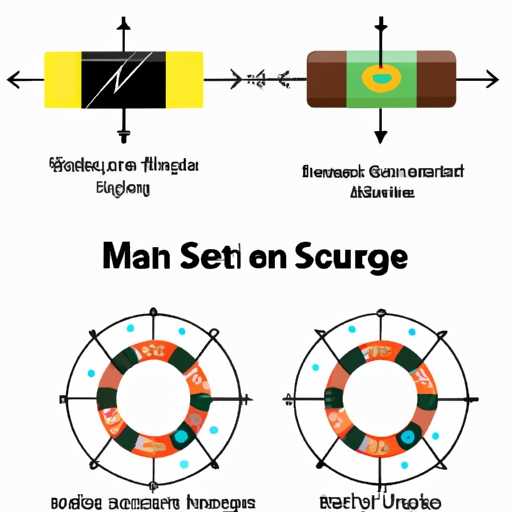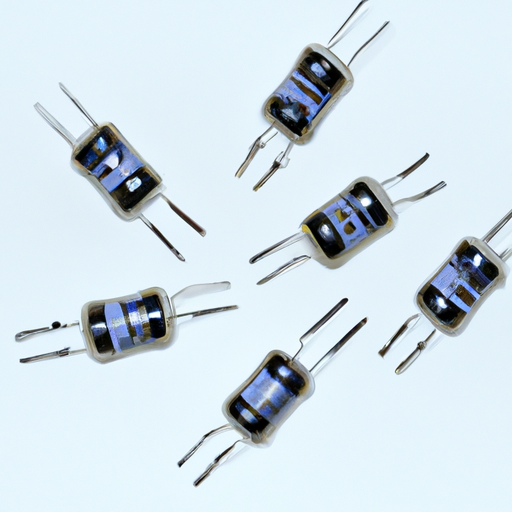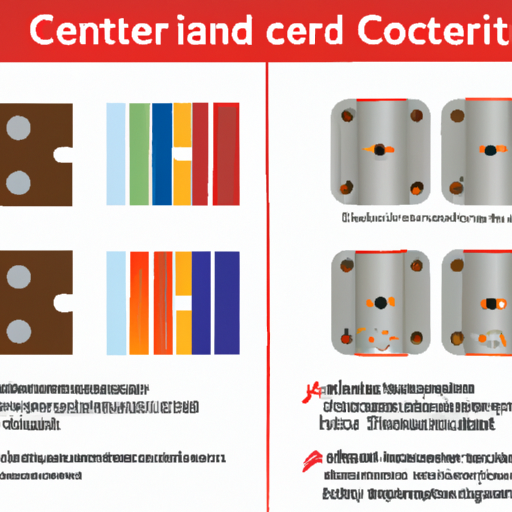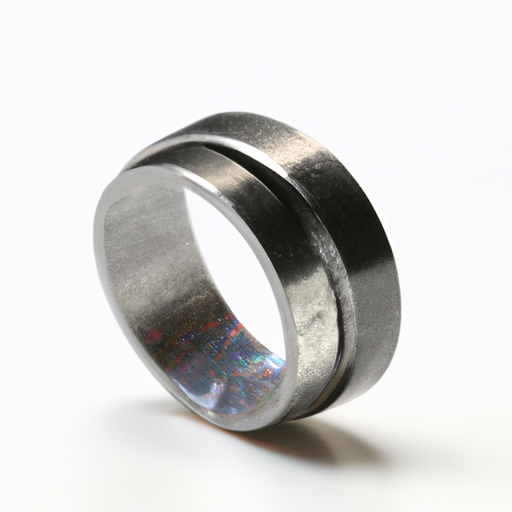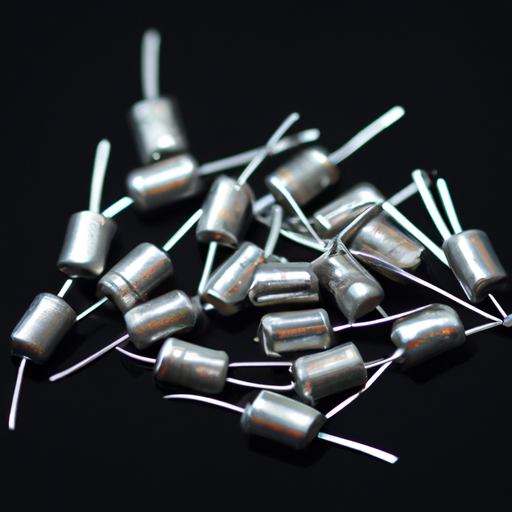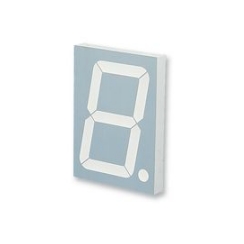How should spot magnetic inductors be selected?
How Should Spot Magnetic Inductors Be Selected?
I. Introduction
In the realm of electronics, spot magnetic inductors play a crucial role in various applications, from power supply circuits to radio frequency (RF) systems. These components are essential for managing energy flow and ensuring signal integrity. Selecting the right inductor is vital for optimizing performance, efficiency, and reliability in electronic designs. This blog post will guide you through the selection process for spot magnetic inductors, highlighting key parameters, environmental considerations, and application-specific needs.
II. Understanding Magnetic Inductors
A. Basic Principles of Inductance
Inductance is a fundamental property of electrical circuits, defined as the ability of a component to store energy in a magnetic field when an electric current flows through it. The relationship between current and magnetic field is governed by Faraday's law of electromagnetic induction, which states that a change in magnetic flux can induce an electromotive force (EMF) in a circuit. This principle is the foundation of how inductors function.
B. Types of Magnetic Inductors
There are several types of magnetic inductors, each with unique characteristics suited for different applications:
1. **Air Core Inductors**: These inductors use air as the core material, making them lightweight and suitable for high-frequency applications. However, they typically have lower inductance values compared to other types.
2. **Iron Core Inductors**: Iron core inductors provide higher inductance and are often used in power applications. The iron core enhances the magnetic field, but these inductors can suffer from core losses at high frequencies.
3. **Ferrite Core Inductors**: Ferrite cores are made from a ceramic material that offers high magnetic permeability and low losses at high frequencies. They are commonly used in RF applications and power supplies.
C. Applications of Magnetic Inductors
Magnetic inductors find applications in various fields, including:
1. **Power Supply Circuits**: Inductors are used in buck and boost converters to regulate voltage and current.
2. **RF Applications**: Inductors are essential for tuning circuits, impedance matching, and filtering in RF systems.
3. **Signal Processing**: Inductors help in shaping and filtering signals in audio and communication systems.
III. Key Parameters for Selection
When selecting a spot magnetic inductor, several key parameters must be considered:
A. Inductance Value
The inductance value is a critical parameter that determines how much energy the inductor can store. It is measured in henries (H) and is essential for ensuring the inductor meets the requirements of the circuit. To calculate the required inductance, designers must consider the operating frequency, load current, and desired ripple voltage.
B. Current Rating
The current rating of an inductor indicates the maximum current it can handle without saturating. Saturation occurs when the magnetic core becomes fully magnetized, leading to a significant drop in inductance. Understanding the saturation current is crucial for preventing performance degradation. Additionally, thermal management is vital, as excessive current can lead to overheating and failure.
C. DC Resistance (DCR)
DC resistance (DCR) is the resistance of the inductor when a direct current flows through it. A lower DCR results in higher efficiency, as less energy is lost as heat. However, there is often a trade-off between DCR and inductance; inductors with higher inductance may have higher DCR. Designers must balance these factors based on the specific application requirements.
D. Frequency Response
The frequency response of an inductor is characterized by its self-resonant frequency (SRF), which is the frequency at which the inductor behaves like a capacitor due to parasitic capacitance. Understanding the impedance characteristics at different frequencies is essential for ensuring the inductor performs well in its intended application.
E. Size and Form Factor
The physical dimensions and form factor of the inductor are important considerations, especially in compact electronic designs. Inductors come in various sizes and mounting options, including through-hole and surface mount. Designers must choose an inductor that fits within the available space while meeting performance requirements.
IV. Environmental Considerations
Environmental factors can significantly impact the performance and reliability of magnetic inductors:
A. Operating Temperature Range
Inductors must operate within specified temperature ranges to ensure reliability. High temperatures can lead to increased DCR and reduced inductance, while low temperatures can affect the material properties of the core.
B. Humidity and Moisture Resistance
Humidity can lead to corrosion and degradation of the inductor's materials. Selecting inductors with appropriate moisture resistance ratings is essential for applications in humid environments.
C. Magnetic Interference and Shielding
In applications where multiple inductors are used in close proximity, magnetic interference can occur. Shielding techniques may be necessary to minimize this interference and ensure optimal performance.
V. Application-Specific Considerations
Different applications have unique requirements that influence inductor selection:
A. Power Supply Design
In power supply circuits, inductors are used in buck and boost converters to regulate voltage and current. The inductor's inductance value, current rating, and DCR are critical for ensuring efficient operation and minimizing ripple voltage.
B. RF and Communication Systems
In RF applications, inductors play a vital role in impedance matching and signal integrity. The frequency response and SRF of the inductor are particularly important for maintaining signal quality.
C. Automotive and Industrial Applications
In automotive and industrial settings, inductors must be reliable and durable. Compliance with industry standards and regulations is essential, and inductors may need to withstand harsh environmental conditions.
VI. Testing and Validation
Once an inductor has been selected, it is crucial to validate its performance through testing:
A. Simulation Tools for Inductor Selection
Simulation tools can help designers model the behavior of inductors in their circuits, allowing for better-informed decisions during the selection process.
B. Prototyping and Testing
Building prototypes and conducting tests can provide valuable insights into the inductor's performance in real-world conditions. This step is essential for identifying any potential issues before full-scale production.
C. Performance Evaluation Metrics
Evaluating the inductor's performance based on metrics such as efficiency, thermal performance, and frequency response is critical for ensuring it meets the application's requirements.
VII. Conclusion
Selecting the right spot magnetic inductor is a multifaceted process that requires careful consideration of various parameters, environmental factors, and application-specific needs. By understanding the fundamental principles of inductance and the characteristics of different types of inductors, designers can make informed decisions that optimize performance and reliability. As technology continues to evolve, staying abreast of future trends in magnetic inductor technology will be essential for maintaining a competitive edge in the electronics industry.
VIII. References
A comprehensive list of academic journals, industry standards, and manufacturer specifications can provide further insights into the selection and application of magnetic inductors. These resources are invaluable for engineers and designers seeking to deepen their understanding of this critical component in electronic systems.

